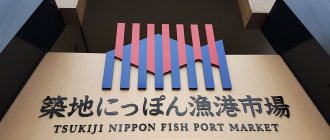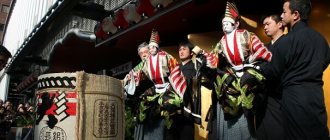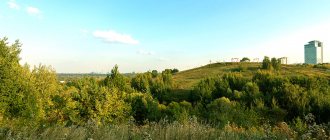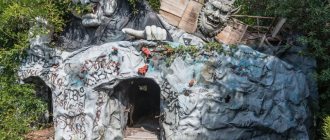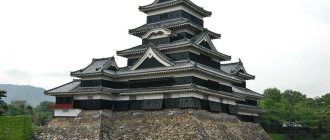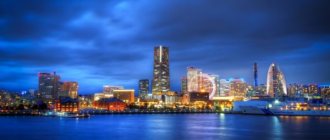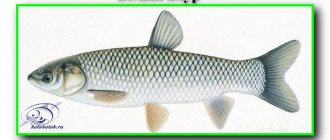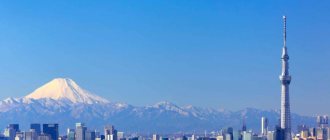What is Toyosu Fish Market?
Toyosu Fish Market opened in October 2021 to replace Tsukiji Market, which has been in operation since 1935.
The ultra-modern and technologically advanced Toyosu shopping area occupies a huge area of 40.7 hectares and consists of three buildings:
- fruit and vegetable building (3 floors),
- fish wholesale building (5 floors),
- administrative building (6 floors).
At the Toyosu market, everything has been done to make the visitor feel comfortable: direct access to Shijo-mae station, many information stands and signs in English, a clean, very well-thought-out and organized area, separate fenced areas for those who want to watch the auction.
In the Japanese capital, the world's largest fish market, having moved from the historic Tsukiji district where it had been located since 1935, has officially opened in a new giant complex on the Toyosu site near Tokyo Bay. This was reported by NHK.
Tsukiji - it was the largest in Japan and the world in terms of sales. Without seeing Tsukiji, it is impossible to understand the Japanese attitude towards the sea and its inhabitants, it is impossible to look into the soul of Japanese cuisine. Probably every tourist from Primorye who visited Tokyo visited here. And when the conversation once again comes up about creating a fish market in Vladivostok, Tsukiji involuntarily comes to mind. And if you consider that the catches of Primorye fishermen end up here, on the Japanese people’s table, then Tsukiji is not a stranger to us at all... However, this is a topic for another conversation.
When you first find yourself here and look around at the shopping arcades stretching into the gloomy distance, it is impossible to believe that today all this will be eaten at home at dinner or in restaurants, and tomorrow early in the morning the counters will again be filled with fish, live shellfish, octopuses and such sea creatures, oh the existence of which until now I had not even realized, much less suspected that they could be edible.
Tsukiji is the spirit of a passing Japan. It is a noisy, sometimes rough and tumble, loud and boisterous market. This is the only place in Japan where no one feels reverence for a pedestrian or a tourist - they simply do not pay attention to him. The main thing here is the fish and how best to sell it. The loaders rush along, not paying attention to tourists who are gaping or taking photographs, occasionally announcing their approach by shouting “move aside!” This world will no longer exist. The new Toyosu market is more spacious, brighter, and meets all modern requirements, but will it be able to recreate this atmosphere and spirit of a bygone era? Over time, he will probably create his own.
Trading on the new market began today at 05:30 local time. Market President Hiromi Amino said the opening marks the beginning of a new era in Toyosu. He added that he would do everything to pass on the traditions, knowledge and skills accumulated over more than 80 years of operation of the market in Tsukiji. Amino also called for a concerted effort in the coming century to create a new Toyosu brand that would surpass Tsukiji.
The Tokyo government spent more than $5 billion on the construction of the new market. The new complex is located on an area of 407 thousand square meters. m - almost twice as much as in Tsukiji. The opening of the market began with an auction, where a Pacific tuna carcass weighing 214 kg was sold for the highest price - $38.4 thousand.
Photo by Reuters and RIA Novosti
How to get there?
Toyosu Market is located around Shijo-mae Station on the Yurikamome Line.
The most convenient way to get there is by public transport. From Tokyo Station, take the JR Yamanote Line, go one station to Yurakucho (1 minute), change to the Yurakucho Subway Line and go to Toyosu Station (8 minutes). Next, change to Yurikamome and go one station to Shijo-mae Station (4 minutes). The station has direct access to the market.
Also, there is no car or bicycle parking here. If you arrive by car, you will have to use the nearest paid parking. This is worth considering when planning a visit to the market.
Safety first?
Tokyo authorities, with the cooperation of experts, launched a series of measures to clean up the soil, and in November 2014 launched a monitoring study of groundwater, the results of which were required to officially declare the site safe. The monitoring was planned for two years, with the last examination scheduled after November 7, the original date of the market opening. Why were the moving dates determined without taking into account the monitoring date? Until the end of August 2016, 7 examinations were carried out, indicating a complete absence of problems, but the results of the last monitoring were planned to be received only in January 2021. Is it possible to open a market without official confirmation of its safety?
The decision on the opening date of the new market was made following a discussion between municipal authorities and wholesalers. Many believe that this date primarily reflects the interests of the authorities, who are rushing to begin construction of a second ring highway passing through the territory of the old market, in preparation for the 2020 Olympics in Tokyo. It would be more convenient for sellers to move to a new location not in November, when preparations for the New Year holidays begin, but after the New Year's bustle is over, that is, in February. “We decided to open the new market on November 7, respecting the position of the municipality,” says the source.
Working hours. Conditions of visiting.
Toyosu Market opening hours are from 05:00 am to 17:00 pm, but most shops and restaurants do not open until 07:00 am. The market is closed on Sundays and public holidays.
From October 1, 2021, for the period of adaptive quarantine to prevent the spread of COVID-19, market opening hours have been reduced to 15:00.
We recommend setting aside at least two hours to visit the entire complex: visit the tuna auction, walk through the wholesale fish market and the fruit and vegetable department.
Visiting Toyosu Market is free, with guest badges issued at the entrance.
The world's most famous fish market has closed in central Tokyo.
Tsukiji's early days and what he looked like in June 2015 and June 2010.
Photo: Kyodo News, Kiyoshi Ota/Bloomberg, Koichi Kamoshida/Getty Images
The history of the Tsukiji area begins in 1657. During the Tokugawa shogunate, soil excavated during the construction of fortress moats and canals was purposefully transported here - this is how a new residential and commercial area emerged. The Great Kanto Earthquake of September 1, 1923 and the subsequent fires caused enormous damage to central Tokyo. During the reconstruction of the city, the fish market in Tsukiji had to be moved.
Checking frozen tuna before auction.
Photo: The Asahi Shimbun via Getty Images
The market is one of Tokyo's key attractions. Every day it is visited by 42 thousand tourists.
Buyers at the final auction on market close on October 6.
Photo: Tomohiro Ohsumi/Bloomberg
Clockwise from left: Customer checking tuna; buyers at auction; fish inspection tools; checking frozen tuna.
Photo: Noriyuki Aida/Bloomberg, Koichi Kamoshida/Getty Images
Market workers cut up whole tuna at the first auction in 2014.
Photo: Kiyoshi Ota/Bloomberg
Every year a symbolic New Year's auction is held at the market, which attracts media attention. It sells fish literally in seconds. The most expensive tuna was purchased by the Kiyomura company, whose owner Kiyoshi Kimura runs a chain of Japanese restaurants - it was bought for $1.36 million.
Fish are tested for radiation levels in 1954 following the American test of the Castle Bravo thermonuclear explosive device on March 1, 1954 at Bikini Atoll. Photo: The Asahi Shimbun/Getty Images
Photo: Yoshikazu Tsuno/AFP via Getty Images, Tomohiro Ohsumi/Getty Images, Tomohiro Ohsumi/Bloomberg
Workers on forklifts. This type of transport is a distinctive feature of the market.
Photo: The Yomiuri Shimbun via AP Photo
In August 2021, a fire broke out in Tsukiji and could not be extinguished for 15 hours. The key reason for the move is security measures.
Photo: Frédéric Soltan/Corbis via Getty Images
Market relocation is not an easy task. The Tokyo government first decided to move in 2001, but poor soil at the new site and high costs meant it was delayed for 17 years.
Photo: Daniel Berehulak/Getty Images
Tsukiji has made several appearances in films in recent years, such as Jiro Dreams of Sushi, a 2011 documentary about Jiro Ono, one of Tokyo's most famous sushi chefs.
Photo: Daniel Berehulak/Getty Images
According to the Tokyo government website, the cost of relocating the market is $3.45 billion.
Photo: Daniel Berehulak/Getty Images
Not everyone is happy about moving to Toesa. Some agreed with the decision, others decided to close stores.
Photo: Noriko Hayashi/Bloomberg
Photographer: Tomohiro Ohsumi/Bloomberg
Tsukiji is not only a place where you can buy fish. It sells everything from snacks to kitchen utensils. Visitors can also stop by the restaurant and eat ramen or try Japanese sweets.
Photo: Tomohiro Ohsumi/Bloomberg
At the old site in the Tsukiji area, it is planned to build a transport hub for guests of the Tokyo 2020 Olympics.
Photo: Daniel Berehulak/Getty Images
Source.
What is a tuna auction? And how to get there?
One of the main and most attractive attractions for tourists is watching the famous tuna auction, which is held in the morning from 05:30 to 06:30. For this purpose, there are two types of observation platforms.
One observation deck is an enclosed gallery with glass viewing windows, located one floor above the site where the auction itself is held. You don't need to do anything special to access here. The only thing we recommend is to come early so that you can get a good place. The gallery is open to visitors from 05:00 in the morning and at this time preparations for the auction are already underway and there is something to see.
The second observation deck is located on the floor below, from where you can not only watch, but also hear everything that happens at the auction. Since it is only partially separated from the auction area by glass, the temperature there is quite low, so be sure to take warm clothes with you. To access this observation deck, you must register in advance. Submission of applications is possible on the official website or by phone (0570-02-9999)(P-code for registration 599-714) approximately a month before the desired date of visit. The application window is 10 days, application acceptance dates are announced on the website, applications are accepted Japanese only The following additional measures have been implemented during the adaptive quarantine period.
- The number of visitors is limited to 27 people.
- Viewing hours are from 05:55 to 06:25.
- If there are more applications than required, selection will be made by lottery.
The start of the auction is announced by a bell. Depending on how much tuna is planned to be sold that day, the duration of the auction may vary: from 20 minutes to 1 hour. Several auctions can be held simultaneously. Buyers and sellers move in small groups from item to item until everything is sold. They are followed by fish market workers, who immediately stick “sold” tags on the fish. Both fresh and frozen tuna are available for sale.
Please note that on the observation deck, the right side is for tourists, the left is for the press and officials. Also, there are local volunteers who will be happy to explain to you in English what is happening at the auction and answer all your questions.
Plans thwarted
« We're not in the mood for jokes, but Tokyo Municipality seems to be making fun of us
» , - Chairman of the Tsukiji Market Association Ito Hiroyasu does not hide his anger at the governor. Members of the Association - intermediaries and wholesale sellers of seafood and fresh fruits - met the governor's decision to postpone with hostility. Work to prepare for the move was in full swing - the sellers had already installed huge refrigerators and waste disposal units in the new location, installed electrical wiring in the offices, equipped the dining room and cabinets, spending more than 20 billion yen on this.
The governor names 3 reasons for the delay - a questionable level of security, huge amounts of non-transparent costs and incomplete disclosure of information. Koike announced the creation of a project group on the problem of the Tsukiji market in order to study the work carried out and develop a plan for upcoming measures. The biggest concern is the security issue. The market was built on the site of a Tokyo Gas plant, and soil test results in 2008 showing 43,000 parts of the maximum permissible concentration of benzene indicated the need for large-scale soil cleanup.
What else is attractive about the Toyosu market besides the auction?
If you're not participating in an auction and just want to see some market activity, you don't have to get up at the crack of dawn; It is enough to be there before 8 am. If you just want to eat fresh sushi, you can come at any time and skip the wholesale fish market.
All counters and shops in Toyosu are super modern, cleanliness and hygiene are at the highest level. For those who want to buy ready-made seafood or dishes made from them, on the 4th floor of the wholesale market there are more than 100 shops, cafes and restaurants that will surprise even real gourmets. Not only food products are sold here, but also kitchen utensils, knives and much more. Here you can buy a lot of souvenirs for every taste at a reasonable price.
After visiting the main sites - the tuna auction and the wholesale fish market, you can go up to the observation deck on the roof of the 5th floor. The grass-strewn, green roof offers stunning views of Tokyo Bay, Tokyo Tower and, on clear days, Mount Fuji.
The fruit and vegetable market is located in a separate building. Here you can purchase both Japanese-made products and those grown and brought from abroad. In addition, there are four restaurants and one store. Also, from 06:30 in the morning, for one hour, visitors can watch the fruit and vegetable auction from the viewing area.
Toyosu Market is not just a trading area, it is a place where you can get acquainted with the vibrant life of the trade sector, watch the bidding process, taste the freshest seafood, unusual dishes from the best craftsmen, buy wonderful souvenirs and look at Tokyo from a bird's eye view .
How to get to Tsukiji Market?
No one knows what the future holds for Tsukiji. However, until these mysterious changes materialize, the market is still available to visit - and we definitely recommend you do so if the opportunity arises. Roughly speaking, you have two options: either rise before sunrise to catch the tuna auctions for which the market is so famous, or arrive around 09:00 to catch the lively trade.
Once you get to the market, you will find that it is divided into two sections: internal and external. The outer market is much smaller and has many excellent sushi bars and restaurants, as well as shops selling vegetables, spices, kitchen supplies and more. As for the domestic market, it is indeed very interesting. This is where you will find all the seafood wholesalers, as well as some of the best sushi restaurants throughout Japan. People literally have to stand in line for hours just to get there for a couple of minutes.
